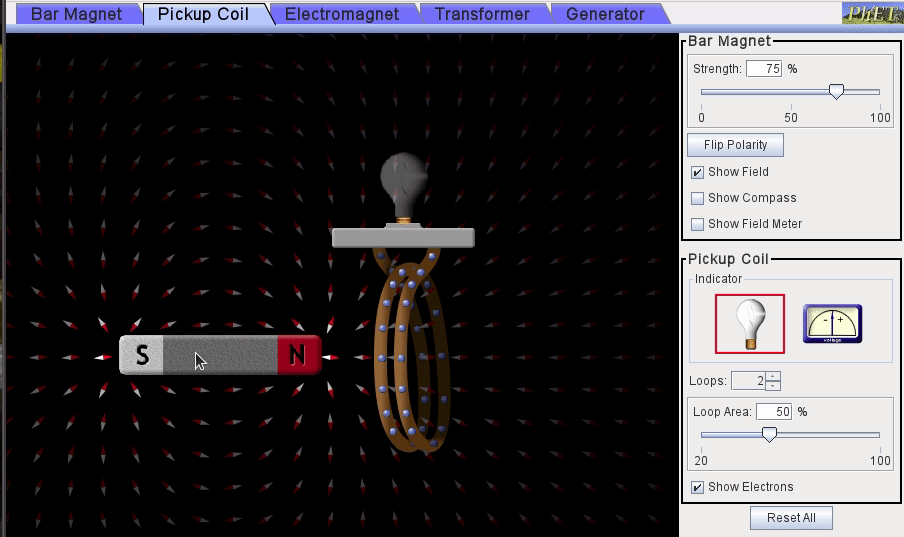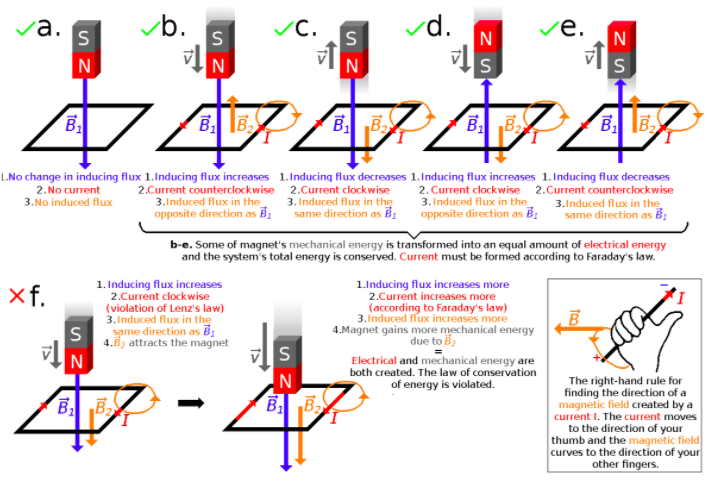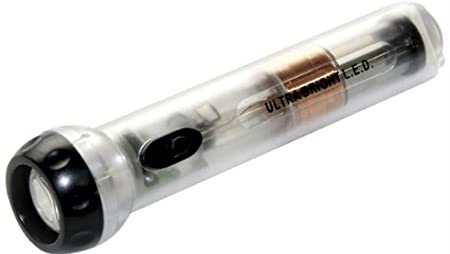Unit 5: Electromagnetism – Electromagnetic Induction
Electromagnetic Induction, a pivotal concept in electromagnetism, demonstrates how magnetic fields produce voltage and, consequently, electric current in a circuit. This process, which has revolutionized modern technology, is at the heart of applications ranging from generators to transformers. Let’s explore the underlying principles, key laws, and practical applications of electromagnetic induction.
5.0: Overview
Congratulations on reaching the final unit of AP® Physics C: E&M! This unit explores how electric circuits generate magnetic fields, the applications of these interactions in devices like motors and transformers, and a detailed look at Maxwell’s equations—the foundation of electromagnetism. Accounting for 14-20% of the AP exam, mastering this unit is critical for success. To practice, utilize the Personal Progress Check, which includes approximately 25 multiple-choice questions and one free-response question.
5.1: Electromagnetic Induction
Making Magnets from Electricity
Electromagnetic induction is the process of producing voltage using magnetic fields. If this voltage exists in a complete circuit, it generates a current. In Unit 4, we saw how moving charges create magnetic fields. Here, we reverse the process: moving magnetic fields induce electric fields.
A hands-on demonstration of this principle can be experienced with simulations like the PhET Pickup Coil. For example, to light a bulb, the magnet must be moving. A stationary magnet produces no voltage. Just as moving charges generate a magnetic field, a moving magnetic field induces a potential difference in a conductor.

Magnetic Flux
Magnetic flux measures the total magnetic field passing through a given area. This concept parallels electric flux (explored in Unit 2) and is vital for understanding Faraday’s Law. Mathematically:
Where:
: Magnetic flux (Weber, Wb)
: Magnetic field strength (Tesla, T)
: Area of the loop (m)
: Angle between the magnetic field and the area vector


Flux changes occur through:
Altering the magnetic field strength .
Modifying the loop area .
Changing the angle between and the loop.

Faraday’s Law and Lenz’s Law
Faraday’s Law
Faraday’s Law quantifies how a changing magnetic flux induces an electromotive force (EMF) in a conductor. For a single loop:
For multiple loops:
Where is the number of turns in the coil. Increasing the number of loops amplifies the induced EMF, forming the basis of transformers.
Lenz’s Law
Lenz’s Law explains the negative sign in Faraday’s Law. It states that the induced EMF and current oppose the change in magnetic flux that caused them. This opposition ensures conservation of energy, preventing runaway feedback loops that would otherwise violate physical laws.
Example: If a magnet approaches a coil, the induced current generates a magnetic field opposing the approaching magnet. Conversely, as the magnet moves away, the induced current creates a field that attracts it back.

Demonstrations of Faraday’s and Lenz’s Laws
Stationary Magnet: No changing flux; no induced current.
Approaching Magnet: Increasing flux induces a counteracting current.
Receding Magnet: Decreasing flux induces a current supporting the diminishing field.
Practical Applications of Electromagnetic Induction
1. Transformers
Transformers adjust voltage levels in circuits. For example, a phone charger converts 120V or 240V from a wall outlet to 5V for charging. This voltage transformation depends on the ratio of loops in the primary (input) and secondary (output) coils:

2. Motional EMF Devices
Devices like shake flashlights generate EMF without batteries. A magnet sliding within a coil induces a current, providing a renewable power source.


Example: A metal bar pushed along rails in a magnetic field induces a current. The EMF:
Where is the length of the bar and is its velocity.
3. Microphones and Headphones
Microphones convert sound waves into electrical signals using electromagnetic induction. Headphones reverse the process, converting electrical signals back into sound.
Maxwell’s Equations
Maxwell’s Equations summarize the fundamental principles of electromagnetism:
Gauss’s Law for Electric Fields:
Electric flux through a surface is proportional to the enclosed charge.
Gauss’s Law for Magnetic Fields:
Magnetic flux through a closed surface is zero; magnetic monopoles do not exist.
Faraday’s Law of Induction:
A changing magnetic flux induces an EMF.
Ampère’s Law with Maxwell’s Correction:
Magnetic fields circulate around currents and changing electric fields.
Practice Problems
Problem 1: Induced EMF Direction
A rod moves to the right in a magnetic field pointing into the page. Using Lenz’s Law and the Right-Hand Rule, determine the direction of the induced current.
Solution: The flux increases as the rod moves. To oppose this, the induced field points out of the page. The current flows counterclockwise (CCW).
Key Takeaways
Electromagnetic Induction: Magnetic flux changes induce voltage and current, governed by Faraday’s and Lenz’s Laws.
Applications: Transformers, generators, and motional EMF devices rely on these principles.
Maxwell’s Equations: Unified framework for electric and magnetic fields.
Practical Impact: From power transmission to audio devices, electromagnetic induction powers modern technology.
Electromagnetism FAQs
1. What is electromagnetism?
Electromagnetism is a branch of physics that studies the relationship between electric fields, magnetic fields, and electric charges. It encompasses phenomena such as electric currents, magnetic fields, electromagnetic waves, and how they interact. Electromagnetism is one of the four fundamental forces of nature.
2. Who discovered electromagnetism?
Hans Christian Ørsted discovered electromagnetism in 1820 when he observed that a current-carrying wire deflected a nearby compass needle, showing a link between electricity and magnetism.
3. What are Maxwell’s equations?
Maxwell’s equations are four fundamental equations describing electromagnetism:
Gauss’s Law (Electric):
Gauss’s Law (Magnetic):
Faraday’s Law of Induction:
Ampère-Maxwell Law: These equations unify the electric and magnetic fields.
4. What is the relationship between electricity and magnetism?
Electricity and magnetism are interrelated. A moving electric charge creates a magnetic field (electromagnetism), and a changing magnetic field induces an electric current (electromagnetic induction).
5. What is an electromagnetic wave?
Electromagnetic waves are oscillations of electric and magnetic fields that propagate through space at the speed of light. Examples include visible light, radio waves, and X-rays.
6. What is the speed of electromagnetic waves?
Electromagnetic waves travel at the speed of light in a vacuum, which is approximately 299,792 kilometers per second (km/s) or meters per second (m/s).
7. What is the electromagnetic spectrum?
The electromagnetic spectrum is the range of all electromagnetic waves, categorized by wavelength or frequency. It includes:
Radio waves
Microwaves
Infrared
Visible light
Ultraviolet
X-rays
Gamma rays
8. How do antennas work?
Antennas transmit and receive electromagnetic waves. When an electric current oscillates in an antenna, it generates electromagnetic waves that propagate outward. Conversely, incoming waves induce currents in the receiving antenna, converting them into electrical signals.
9. What is electromagnetic induction?
Electromagnetic induction is the process by which a changing magnetic field induces an electric current in a conductor. This principle is the basis of electric generators and transformers.
10. What is a magnetic field?
A magnetic field is a vector field surrounding a magnetic material or moving electric charge. It exerts a force on other moving charges or magnetic materials within its influence.
11. What is an electric field?
An electric field is a region around a charged particle where other charges experience a force. It is represented by electric field lines that point away from positive charges and toward negative charges.
12. How are electromagnets made?
Electromagnets are made by coiling a wire around a ferromagnetic core (like iron) and passing an electric current through the wire. The magnetic field strength increases with the number of coils and current.
13. What is the right-hand rule in electromagnetism?
The right-hand rule is a mnemonic for determining the direction of the magnetic field. Point your thumb in the direction of current flow, and your curled fingers indicate the direction of the magnetic field.
14. What are the applications of electromagnetism?
Applications include:
Electric motors and generators
Transformers
Magnetic resonance imaging (MRI)
Wireless communication
Inductive charging
Particle accelerators
15. How do electric motors work?
Electric motors convert electrical energy into mechanical energy using electromagnetic forces. Current through coils in a magnetic field produces rotational motion due to Lorentz force.
16. How do transformers work?
Transformers use electromagnetic induction to transfer electrical energy between two coils (primary and secondary). Changing current in the primary coil induces a voltage in the secondary coil.
17. What is electromagnetic radiation?
Electromagnetic radiation is energy emitted as electromagnetic waves or photons. Examples include sunlight, X-rays, and microwave signals.
18. What is polarization of light?
Polarization is the orientation of light’s electric field vector. Light can be polarized linearly, circularly, or elliptically depending on the electric field’s behavior.
19. How is electromagnetic theory used in communication?
Electromagnetic waves carry information through modulation techniques like amplitude modulation (AM) and frequency modulation (FM) in radio and wireless communication.
20. What is the Lorentz force?
The Lorentz force is the force on a charged particle in electric and magnetic fields, given by: where is the charge, is the electric field, is velocity, and is the magnetic field.
21. What is Faraday’s Law?
Faraday’s Law states that a changing magnetic field through a closed loop induces an electromotive force (EMF) proportional to the rate of change: where is the magnetic flux.
22. How do electromagnetic waves interact with matter?
Electromagnetic waves interact through reflection, refraction, absorption, and scattering. For example, X-rays penetrate soft tissue but are absorbed by bones.
23. What is the difference between AC and DC currents?
AC (Alternating Current): Current direction reverses periodically.
DC (Direct Current): Current flows in one direction.
24. What is magnetic flux?
Magnetic flux is the measure of the total magnetic field passing through a surface. It is given by:
25. What are electromagnetic fields?
Electromagnetic fields consist of electric and magnetic components that propagate through space. They are created by moving charges and time-varying electric fields.
26. What is an electromagnetic pulse (EMP)?
An EMP is a burst of electromagnetic radiation caused by a sudden release of energy, such as a nuclear explosion or solar flare, disrupting electronic systems.
27. What are the dangers of electromagnetic waves?
High-frequency waves (e.g., X-rays, gamma rays) can damage tissues and DNA. Prolonged exposure to low-frequency waves can also pose health risks.
28. What is the principle of electromagnetic shielding?
Electromagnetic shielding uses conductive materials to block electromagnetic fields, preventing interference with sensitive electronic equipment.
29. How do wireless chargers work?
Wireless chargers use electromagnetic induction to transfer energy from a charging pad to a device through a magnetic field.
30. What is the Hall effect?
The Hall effect occurs when a magnetic field applied to a conductor causes charge carriers to accumulate on one side, creating a voltage perpendicular to the current.
31. How does light travel through a vacuum?
Light, an electromagnetic wave, does not require a medium and travels through a vacuum at the speed of light.
32. What are eddy currents?
Eddy currents are loops of induced currents in conductors exposed to changing magnetic fields, causing energy dissipation as heat.
33. What is the relationship between wavelength and frequency?
Wavelength (λ) and frequency (f) are related by the equation: where is the speed of light.
34. How do electromagnets differ from permanent magnets?
Electromagnets require an electric current to generate a magnetic field, while permanent magnets maintain a constant magnetic field without current.
35. What is the significance of μ₀ and ε₀ in electromagnetism?
μ₀: Permeability of free space ()
ε₀: Permittivity of free space () These constants define the behavior of electric and magnetic fields in a vacuum.
36. What is electromagnetic torque?
Electromagnetic torque is the rotational force generated in motors due to the interaction between magnetic fields and current-carrying conductors.
37. What are microwaves?
Microwaves are electromagnetic waves with wavelengths between 1 mm and 1 m, used in communication, radar, and cooking.
38. What is the photoelectric effect?
The photoelectric effect occurs when light ejects electrons from a material’s surface, demonstrating the particle nature of light.
39. How do electric fields influence charged particles?
Electric fields exert forces on charged particles, accelerating them in the direction of the field (positive charges) or opposite to it (negative charges).
40. What is the Doppler effect in electromagnetism?
The Doppler effect describes the change in frequency or wavelength of electromagnetic waves due to relative motion between the source and observer.
41. How do magnetic fields affect moving charges?
Magnetic fields exert a force perpendicular to the velocity of moving charges, causing circular or helical motion.
42. What are superconductors?
Superconductors are materials that exhibit zero electrical resistance and expel magnetic fields below a critical temperature.
43. How are electromagnetic waves generated?
Electromagnetic waves are generated by accelerating charges, such as oscillating electrons in an antenna.
44. What is electromagnetic coupling?
Electromagnetic coupling is the transfer of energy between electric and magnetic fields, as seen in transformers and inductors.
45. What are ferromagnetic materials?
Ferromagnetic materials, like iron, exhibit strong magnetic properties due to aligned magnetic domains.
46. What is the electromagnetic force?
The electromagnetic force is a fundamental force responsible for interactions between charged particles and magnetic fields.
47. How do X-rays work?
X-rays are high-energy electromagnetic waves used for imaging and medical diagnostics by penetrating tissues and highlighting dense materials like bones.
48. What is electromagnetic compatibility (EMC)?
EMC ensures that electronic devices operate without interference from or causing interference to other devices.
49. What are optical fibers?
Optical fibers use total internal reflection to guide light signals over long distances for communication and data transmission.
50. How does electromagnetism influence everyday life?
Electromagnetism powers countless technologies, including electricity, electronics, wireless communication, transportation, medical devices, and more, making it integral to modern life.







